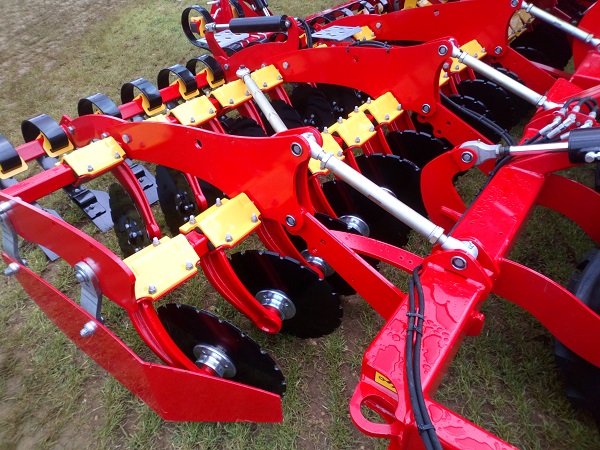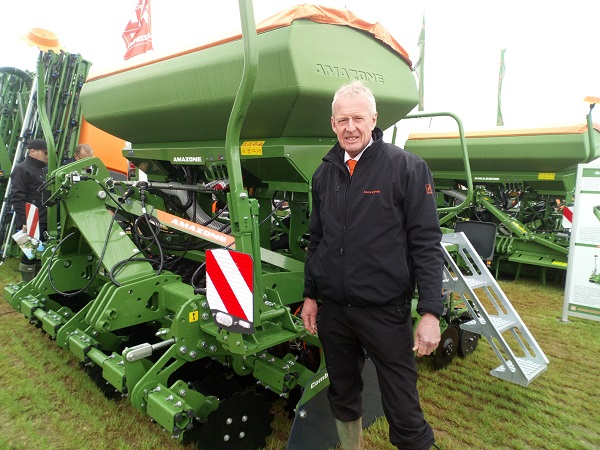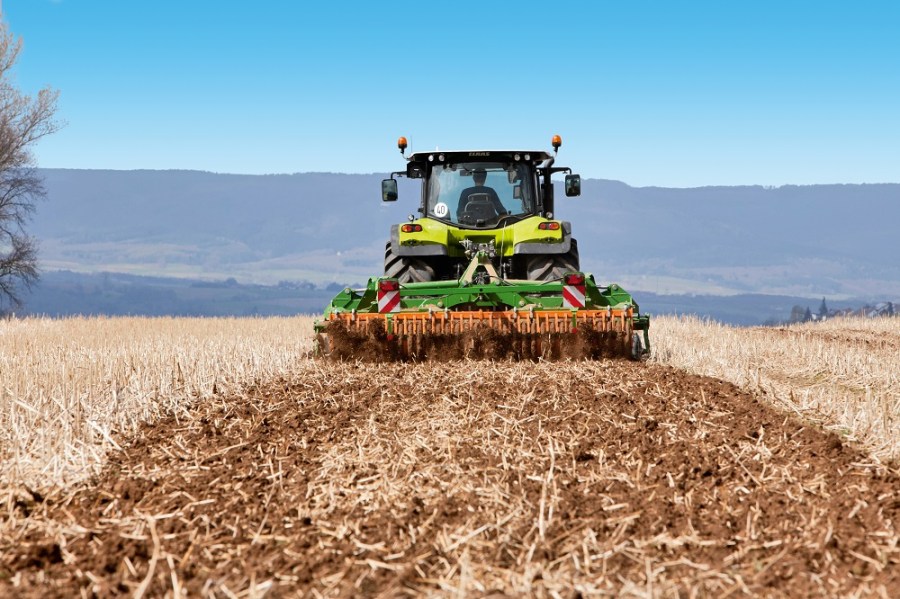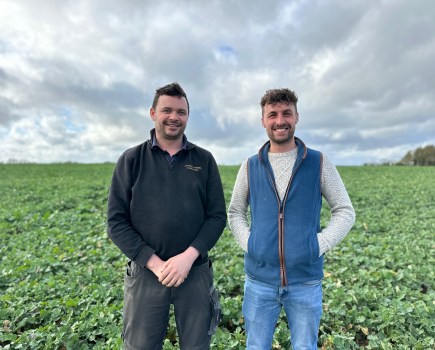When buying a new cultivator or plough, there’s a massive variety of tine and disc designs to choose from – so how can you be sure that the equipment will do the job you want? CPM offers a guide to cultivator design and innovations.
You should only ever cultivate as deep as necessary.
By Olivia Cooper
Shallow and fast, or deep and slow? Serrated discs or curved? Narrow tines or duckfoot shares? Oh, and what type of roller would you like with that? The choice of cultivator set-up can be quite baffling, particularly when most farms have one piece of kit which is meant to carry out a multitude of tasks.
So how do you go about choosing the best equipment for your farm? We caught up with a few manufacturers to get their top tips and latest developments.

The first step, according to Andrew Gamble at Väderstad, is to ascertain what it is you want to achieve. “Dig a hole and figure out what you’re trying to do with the machine – it needs to link to your agronomy.” Are you looking to move a lot of soil on the surface, to chit grassweeds, or do you need to go deep to remove compaction?
If breaking compaction is the aim, Väderstad’s BreakMix point – intended for heavier soils – could be an option. This provides deep loosening (30cm) without mixing at depth, while at the same time mixing intensively in the top 10cm of soil to speed up residue decomposition. In this way, it doesn’t bring clods of earth to the surface, and creates a fine seedbed ahead of drilling.
At the other end of the scale is the CrossCutter Disc for ultra-shallow cultivation. Designed for use in cover crops, maize and oilseed rape stubble, this crenelated disc cultivates the entire working width at only 2-3cm depth, crushing and mulching crop residues without mixing them in too deep. This ensures good oxygenation for decomposition, and also chits weed seeds in the soil surface without bringing up dormant seeds lower down in the profile.

Only ever cultivate as deep as necessary, says Simon Brown
For organic producers, it could be worth a look at the new Goosefoot share, fitted to the NZ harrow for mechanical weed control. This broad yet shallow share slices off weeds at the root and leaves them on the field surface without mixing the soil. Or to add a mixing effect, the Väderstad TopDown fitted with wing shares is an alternative choice.
There are more than 40 different tine and disc options to fit to Väderstad cultivators – and they are easily changeable so you can tailor the set-up to suit requirements. Discs with bigger scallops should be used to cut heavier trash, larger discs are suitable for deep working while smaller discs are for shallow operations. “It’s the setup that’s important – point and disc choice is key to getting the results you require.”
Running too wide a point too deep will create too much ‘boil’ in the soil, and will increase fuel consumption, warns Simon Brown at Amazone. “You should only ever cultivate as deep as necessary, so it’s important to match the style of point to the depth. But very few people change points according to what they need.”
So should you choose a tine or a disc cultivator, or a combination of the two? “A tine is rigid, so it can dig deep or skip on the surface in undulating fields – it’s not really designed for really shallow cultivation,” he notes. “On the other hand, compact disc harrows have the ability to go shallower and follow contours across the full width.”
If cultivating to encourage straw decomposition, Simon offers a useful calculation: 1cm of depth per tonne of straw/ha. “So if you have 10t/ha of straw, cultivating at 12cm will be ample – if you go too deep the straw is outside of the aerobic zone and so won’t rot.”
Shallow tine cultivation should aim to cut off the root ball, provide straw-to-soil contact to trigger decomposition, and promote grassweed growth. “My favourite is a duck foot point as it has a flat profile and cutting action.” It can be mounted to achieve either a full or partial working width, depending on requirements.
For something that loosens the soil at depth, a narrow 40mm tine will do the job down to 30cm. “By narrowing the point you won’t need much more horsepower as it’s not moving too much soil. With a slight curve you’ll get a little bit of lift, but the aim is to shatter the soil sideways, not bring the lower soil to the surface,” explains Simon.
When it comes to disc choice, smaller diameter discs with a smooth surface are suitable for fast, shallow work. Serrated discs provide a bit more bite for heavier land, while larger serrations on bigger discs help with mulching stubble and digging down deeper.
On the Catros and Certos disc harrows, the front row of discs are mounted straighter for more aggressive action on unmoved soil, while the rear row is angled more to work across a broader width and level the soil. “They also have rubber block mountings to allow more movement.”
Consolidating the soil after cultivation is important to ensure residue-to-soil contact, as well as breaking up any clods. “However, you don’t want to seal the soil as it’s important to draw oxygen in,” explains Simon.
Open rollers are cheaper and provide good depth control, but they block easily in wet conditions. Rubber rollers are good for lighter land, while DW rollers are a better choice for heavier soil types. “If you really want to rip the soil up and leave it to weather then you can remove the roller altogether.”
A key aim of many modern cultivators is to loosen the ground and produce a decent seedbed without ‘boiling’ the soil and mixing the profile. KRM’s Maximulch uses a combination of low disturbance TCS tines with a wide share and 560mm concave discs to lift the soil profile and create vertical fissuring while leaving a level surface behind. The cut-out discs break up any surface panning and stubble residue, while the TCS tines can be adjusted down to a depth of 30cm.
“The discs are mounted on pigtail tines, so they can move in three directions rather than just two,” says manging director Keith Rennie. “This gives greater soil shatter and enables them to skip over stones.”
For a truly multipurpose piece of kit, take a look at He-Va’s CombiDisc. Designed to subsoil, surface cultivate and consolidate in one pass it can be set up in different ways to work at any depth from the surface only down to 35cm. The subsoiler legs come with either shear-pin or hydraulic reset, and can be lifted altogether for shallow disc cultivation if required. The discs can be adjusted to work at anything down to 12cm, and work independently of the frame to follow contours, explains Opico’s Richard Amphlet.
By using a sabre disc rather than a more concave one, and mounting it on a curved arm, the disc is more upright when working on the surface, breaking soil sideways rather than scooping and smearing it. And when working at greater depths it is pulled to a steeper angle for improved residue incorporation, he adds.
“Farmers need a cultivator that can cope with a massively changing industry as well as all conditions. Rather than having five cultivators you can have one that works in five scenarios.”
Plough set-up
When choosing a plough, Rob Immink at Maschio will take a farmer through several steps to identify the best option. Available horsepower and field size are two – influencing the size of the plough – followed by soil type. “If you have stony or heavy clay soils you’ll probably want automatic reset – other soils will get away with shear bolts.”
Those with variable soil types may benefit from hydraulic width adjustment, while manual adjustment is suited to more uniform soils. Sticky soils work best with slatted boards, whereas whole boards are fine for other soil types. “If you’re ploughing for potatoes you’ll need a deep board, while cereals want a wider one.”
Most farmers nowadays are using ploughing to control grassweeds, he adds, so are looking for complete inversion to bury the seeds. That will affect the mouldboard design – helical for shallower working depths or cylindrical for deeper inversion – while skimmer choice depends on the residue; are you ploughing maize stalks or short barley stubble?
“There are a lot of factors that determine what plough you need, so it’s important to weigh up all the considerations.”




